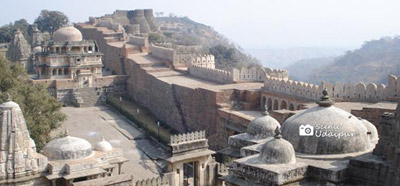
Cradled in the cluster of thirteen mountain peaks of the Aravali ranges, the formidable medieval citadel - Kumbhalgarh stands a wary sentinel to the past glory. Rising from a prominent ridge, 1914 meters high from the sea level, the fort was built in 15th century A.D. by Maharana Kumbha and is the principal fortification after Chittaurgarh, lying 90 Km north-west of Udaipur.
The massive fort, encompassed by a 36 Km long wall, has seven majestic gates and seven ramparts, one within the other. Rounded bastions and soaring watch towers strengthen the crenellated walls of the fort making it an impregnable structure.
Fascinating chambers are built on the western side of the last gate - the 'Nimboo Pol'. According to history, the infant Udai Singh was smuggled from Bundi and hidden in these chambers by his faithful maid Panna Dai to save him from the murderous intensions of his Uncles who desired the throne.
Udai Singh ascended the throne of Mewar with Kumbhalgarh as his residence and later established Udaipur - the beautiful lake city. Within the fort are many magnificent palaces and an array of ruined temples. The most picturesque of the palaces is the 'Badal Mahal' or the palace of the cloud. The palace has got its name for being the highest of all the structures. It offers a superb bird's eye view of the countryside surrounding the fort as well as of other ruins within the fort.
The ancient ruins of the temples within the fort date back to the Mauryan period built during the reign of the grandson of the Mauryan Emperor Ashoka who belonged to the Jain community.
Most of the ruins in Kumbhalgarh are of the Jain temples of various periods. As one moves to east, Kali Temple and the Mamadev Kund with royal Chhatris can be seen. Another noteworthy temple, a little further, enshrines a fine black marble lingam.
The mandap or the hall of the temple has beautiful pillars, finely fluted and having a tapering shape.
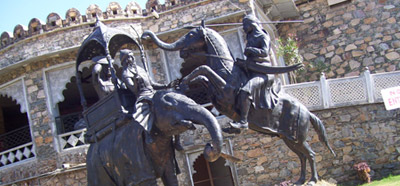
When Rana Pratap refused to show subservience, Akbar decided to chastise him and sent a big army, under Man Singh of Amer, for the purpose. On the 31st of May, 1576, the two armies - 'which were friendly to war and inmicial to life and which treated life as cheap and honour dear' - took positions in Haldighati, ' the turmeric - coloured vale', near Khamnor. The initial assault of the Mewaris rattled up the imperial forces but were then routed. Pratap was saved by Shakti Singh, his estranged brother, but Pratap's famous steed, Chetak, succumbed to his injuries.
Haldighati is now very much on the tourist map and can be covered in a round trip covering Nagda, Eklingji, Delwara, Nathdwara, Rajsamand and Molela.
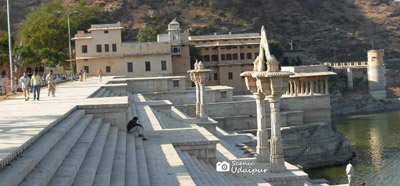
Nathdwara is 48 kms to the north of Udaipur. A few kilometers further on, are located the twin towns of Kankroli and Rajsamand, the latter now the headquarters of a District. As with the Shrinathji at Nathdwara, the idol of Dwarkadheeshji was installed in a new temple at Kankroli. Both the towns nestle by the beautiful lake of Rajsamand which was got built by Maharana Raj Singh, perhaps, as a famine - relief work, during 1662 -76, with a work force of 60,000 and at a cost of Rs. 1.05 crore.
The lake, now measures 1.5 miles, by 2.75 miles and has a catchment area of about 195 sq.miles. The chief glory of the lake lies in the elaborate main dam called "Nauchowki" (nine pavilions) after the nine cupolas - inspired, perhaps, by the flat-roofed marble 'baradaris' built by Shahjehan on the dam of the Anasagar Lake at Ajmer - which adorn it. The art and architecture shows combined Hindu and Islamic traits and the sculpted images and tableaus shed interesting light on the contemporary mores. Also notable is the 'Rajaprashasti' (royal eulogy) engraved on 25 niched slabs - said to be India's biggest enterprise of this type.
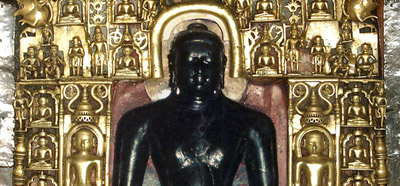
From Chawand, if one so wishes, one can carry on via Parsad, to the temple - town of Rikhabhdeo. The typical offering is that of saffron so much so that the idol has been nicknamed Keshariyaji. Although a Jain shrine, the Hindus also revere it and Bhils, in particular, used to swear by the saffron offered at Kesariyaji. It is a typical, sprawling complex abuzz with activity and the nucleus for a large fair every year.
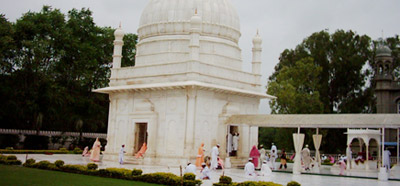
Once the capital of Parmars, this tiny village is reknowned for its magnificent shrine of Sayed Fakhruddin. Thousands of devotees throng here during the Urs. The shrine is beautiful decorated and illuminated for the occasion.
The Jain temples closeby are also worth a visit.
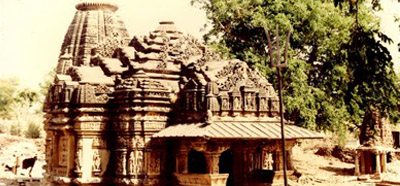
The temple of Jagat, 58 km from Udaipur, dedicated to the goddess Ambika Mata, is well preserved and elaborate in style. It is intact and in the mature idioms of mid - 10th century AD, the temple has several beautiful carvings and erotic sculptures.
Pentagonal in shape, with 17 turrets, the temple has a pagoda-like gabled roof. The inner walls, ceiling and door-frames have been chiseled with great artistry.
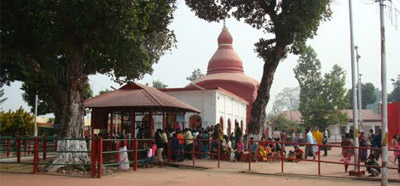
An ancient temple of the goddess Tripura Sundari, commonly known as Turtia Mata. The idol of the goddess riding on a tiger is a magnificent one in black stone with 18 hands, each carrying some symbol. The temple is said to be one of the Shakti Peeth of Hindus.
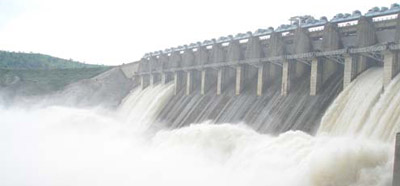
Under the Mahi Bajaj Sagar Project, various dams and canals have been built over the Mahi river amid beautiful surroundings. The Mahi river has a number of Islands at intervals and hence Banswara is at times referred to as 'the city of hundred islands'.
The Mahi Dam and the Kagdi Pikup have a picturesque fountain garden, surely worth a visit.